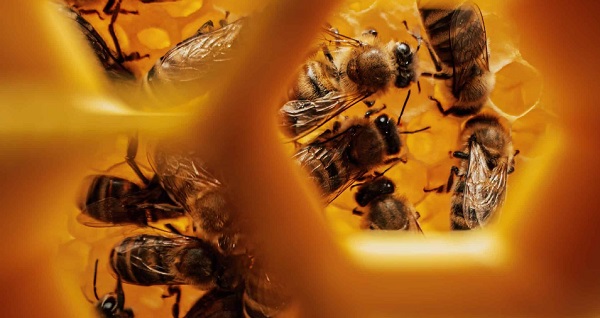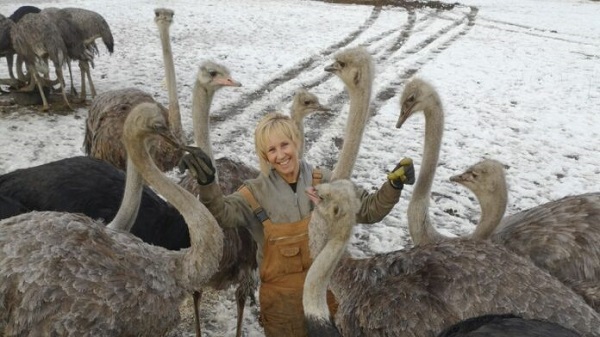Agriculture
Global food shortage? So what! Governments want to reduce the use of fertilizer anyway

Once we acknowledge that over 80% of Canadians live in cities (and an even larger percentage seemingly don’t care much about poor people) it’s much easier to understand why the average Canadian isn’t far more upset with the government’s plan to coerce farmers to cut back on nitrogen fertilizer (otherwise known as plant food).
As complex as the formulas are for estimating the amount of pollution caused by fertilizer use, there’s actually a very simple way to understand this initiative. So let’s simplify. In order to help reduce Canada’s share (about 1%) of global emissions (which a ton of scientists swear is making the world hotter.. Sorry not hotter.. but more climate changy…which actually somehow means worse for everyone everywhere) the government is strongly urging farmers to use less fertilizer and thereby produce less food. The federal government estimates farming is responsible for about 10% of Canada’s emissions. Now that’s all aspects of farming including everything from using nitrogen fertilizer, to driving tractors, to presumably the horrible practice farmers share of breathing out every couple of seconds (more when they’re working hard). They estimate nitrogen fertilizer is responsible for about 18% of the emissions from farming (see below). In other words, this has to stop! I mean 18% of 10% of 1%.. how did we let this get so far away on us?
But here’s a question. Why would a farmer (who is a business operator) want to produce less food (which is the product farmers make and sell to feed the world)? Until now, farmers have always taken pride in producing the best possible crops using the lowest possible inputs (all the expenses from gas to seed to fertilizer, etc). Who wouldn’t? It’s how they make their money. Sounds like a tough sell. Perhaps that’s why governments are coming out with programs that will pay farmers not to farm quite so much. Right here in Alberta there’s a program that could pay an individual farmer up to $75,000.00 to cut back and be a better producer (government talk for producing less food) for people (not poor people who may starve in the coming months) fortunate enough to live 100 years from now.
Sure. That may sound a little offside when you consider global food shortages (another term for starving people) are expected to increase drastically in the coming months. You see the world is always somewhere between a little short of food and desperately short of food (depending on where you live you might feel more ‘desperate’ than inconvenienced). A simple minded person like myself might say “Why would we mess with this system that is feeding more people successfully than at any other time in world history?” Silly me. These guys are way beyond that simple thinking. That’s why the government isn’t asking farmers to consider what’s happening in the world right now (8 billion people need to eat). The government is asking farmers to consider what ‘might’ happen sometime in the future (it may sound a bit wacky when we say it out loud, but we’re pretty sure we can stop the climate from changing).
Apparently in order to get the climate under our control, we should be OK if we have to sacrifice a few million (or multiple hundred million) eaters (another word for people) in the next few years (could be starting in the next few months).
Relax Canadians. We can continue to fly across the country to go surfing in honour of the National Day for Truth and Reconciliation (I saw you there on the beach didn’t I?). We’re almost surely not going to miss a meal. Yah, we might have to double or triple down at the grocery store, but just think of that perfect summer day in the future! You’ll be so happy when your child gleefully watches your grandchild in their paper swim suit splash away in the wooden baby pool that’s in the driveway where the car used to be out front of the rental (now that we won’t be allowed to own cars anymore there’s going to be so much more room in our driveways!) Too bad you can’t travel to be there in person because you’re still getting that ESG score back up after that trip to see the kids a couple years back. Too bad you can’t use that cool social media app to see what they posted because you accidentally typed Turdo instead of Trudeau six months ago (stupid spellcheck).
Here’s to a bright future without the constant worry of oil and gas and nitrogen fertilizer! Just think. No more storms. No more pesky record high or low temperatures. And water levels remain constant year in and year out. It’s going to be awesome (for all the descendants of the people who get to eat in the next couple of years). Maybe we’ll build a statue to honour today’s fearless leaders who are so smart they have realized that it’s NOT THEIR JOB TO PROTECT THE PEOPLE WHO VOTE FOR THEM TODAY, but to CREATE A BETTER FUTURE FOR THE DESCENDANTS OF THOSE WHO CAN AFFORD TO SURVIVE in the future! We’ll certainly inscribe it with something like “These guys weren’t afraid to crack a few eggs to make this omelette. Hope you enjoy omelettes!” I think the perfect location to put that statue will be Davos. I hear it’s beautiful. Speaking of omelettes I hope there are still chickens in the future. I understand those little runts like farting as much as cows do and don’t kid yourself, it adds up!
I digress. This isn’t all about my wandering thoughts. As a journalistic endeavour I’d like to present both sides of thinking on this initiative. This should help teach those simple farmers and their university educated consultants how to farm better with less fertilizer and more crop rotation, etc. (I’m still amazed farmers didn’t already figure this out for themselves, but I bow to those worldly thinkers who make these plans on “our” behalf.) Anyway, a few thoughts from Agriculture Canada, followed by an informative (and entertaining) video presentation from a very well known Saskatchewan farmer.
—–
These statements have been pulled from the “Discussion Document: Reducing emissions arising from the application of fertilizer in Canada’s agriculture sector” on the federal government’s website. You can read it all here but I’ve pulled a couple of statements to help explain the brilliant future forward thinking that goes into plans like this. So please read about why our governments are telling farmers to grow less food to feed fewer people at a time of food shortages.
” In December 2020, the Government of Canada announced its Strengthened Climate Plan, “A Healthy Environment and a Healthy Economy.” It includes a number of measures affecting the agriculture sector, with a goal to reduce greenhouse gas (GHG) emissions, and increase carbon sequestration. This discussion paper addresses one of these measures: a national target to reduce absolute levels of GHG emissions arising from fertilizer application by 30% below 2020 levels by 2030.
Background
Agriculture was responsible for approximately 10% of Canada’s GHG emissions in 2019, or 73 Mt CO2, which come from three main sources: enteric fermentation (24Mt), crop production (24Mt) , and on-farm fuel use (14Mt) (National Inventory Report, 2021.) Based on current data for 2019, emissions from synthetic fertilizers accounted for 12.75 Mt. While many players in the agriculture sector are already working to improve nutrient management and reduce emissions associated with crop production, fertilizers are responsible for a growing share of overall agricultural emissions.
Since the release of Canada’s Strengthened Climate Plan, the Government of Canada has moved swiftly to implement its key aspects in order to create jobs, grow the economy and protect the planet. In April 2021, in line with its obligations under the Paris Agreement, the Government of Canada announced a new GHG emissions reduction target of 40-45% below 2005 levels by 2030. This target, along with other developments such as the passage of the Canadian Net Zero Emissions Accountability Act, which enshrines in legislation Canada’s commitment to achieve net-zero emissions across the Canadian economy by 2050, highlights the need to reduce absolute GHG emissions across all economic sectors, including agriculture.
—–
This part is really interesting because it shows how fertilizer use is far more intense in Quebec and the Maritime provinces, though the bulk of the reductions will have to take place in Western Canada anyway. You know, because.. even though western farmers use less, there are more of them so they actually use more, plus they’re farther away from Ottawa and have less representation per capita.. what was I saying?
Regional Variations
Fertilizer induced emissions are not spatially or temporally uniform across Canadian agricultural landscapes. The seasonal pattern of N2O emissions reflects the interaction between soil temperature, soil water and nitrate availability. Drier regions of the Prairies have much lower N2O losses than the moister regions of Eastern Canada. N2O emissions per hectare are greater in Eastern Canada as a result of the wetter climate and greater N application rates. However, the much larger land area in the Prairies vs. Eastern Canada results in greater total N fertilizer application in the Prairies and thus the total emissions are much higher in this region.
It is important to note that the strategies required to achieve the 30% N2O emission reduction objective will vary across the country as the emissions reduction potential is impacted by biophysical factors (soil type, soil humidity, climate), crop types, and climate change impacts.Footnote3 (OH DEAR GOD CLIMATE CHANGE IS CAUSING MORE CLIMATE CHANGE!)
Figure 3 illustrates the differences between the fertilizer induced emissions patterns across the country, showing N2O emissions per hectare in 2018. The intensity of fertilizer emissions (emissions per ha) is higher east of Saskatchewan, indicating that more fertilizer is applied per hectare, resulting in more direct emissions on a per-acre basis. In addition, wetter conditions in the East result in more direct and indirect emissions.

—–
This part clearly explains how regions that use less fertilizer may be asked to cut back even more than regions using a lot more per capita, because.. because. Also it encourages farmers to stop the nasty habit of pouring fertilizer out randomly all over the place and then grabing a pinch and throwing it over their shoulder. For some reason it still hasn’t addressed when farmers (and their family members) exhale, which is also more intense in heavily populated urban areas in the east (likely because it’s not N2O, but CO2).
Objectives of the National Target for Fertilizer Emissions
In order to achieve a concrete reduction in overall emissions, the target is established relative to absolute emissions rather than emissions intensity. The Government of Canada has been clear that the objective of the national target for fertilizers is to reduce emissions, and that the primary method to achieve this is not to establish a mandatory reduction in fertilizer use that isn’t linked to improved efficiency and maintaining or improving yields. Rather, the goal is to maximize efficiency, optimize fertilizer use, encourage innovation, and to work collaboratively with the agriculture sector, partners and stakeholders in identifying opportunities that will allow us to successfully reach this target.
—–
OK. I don’t expect you were able to understand most of that. But they did their best to explain to those of us who aren’t as good as planning future world scenarios as they are. Now that you see the way our fearless leaders think. But what about the rest of us? In the interest of journalistic integrity we’ll show you what one simple farmer thinks of being urged to use less fertilizer. If you haven’t seen QDM before, please note he sometimes uses very descriptive adjectives (sometimes he turns them into verbs and nouns too) which might be a tad harsh for the younger folk. Please enjoy with a grain of salt and a malted beverage. When he’s finished you can decide for yourself whether you think it’s a great idea to cut back on food production by using less fertilizer.
Agriculture
Unstung Heroes: Canada’s Honey Bees are not Disappearing – They’re Thriving

Canada’s Bee Apocalypse began in 2008. That was the year the Canadian Association of Professional Apiculturists (CAPA) first reported unusually high rates of winter bee colony losses. At 35 percent, the winter die-off that year was more than twice the normal 15 percent rate of attrition.
“Successive annual losses at [these] levels … are unsustainable by Canadian beekeepers,” the CAPA warned. This set off an avalanche of dire media reports that now appear on a regular basis. Among the many examples over the years: Huge Honey Bee Losses Across Canada” and “Canada’s bee colonies see worst loss in 20 years”. As each of these stories reminds readers, the disappearance of honey bees will doom our food supply, given their crucial role in pollinating crops including canola, soyabeans, apples, tomatoes and berries.
This year the black-and-yellow striped Cassandras are back at work, with headlines shouting “Scientists warn of severe honeybee losses in 2025” and “The Bees are Disappearing Again”. If it’s spring, the bees must be disappearing. Again.
It is, however, mathematically impossible for any species to be in an allegedly continuous and calamitous state of decline over nearly two decades and never actually reduce in number. For despite the steady supply of grave warnings regarding their imminent collapse, Canada’s bees are actually buzzing with life.
In 2007, according to Statistics Canada, there were 589,000 honey bee colonies in Canada,; in 2024, they reached 829,000, just shy of 2021’s all-time high of 834,000. Figuring a conservative summertime average of 50,000 bees per colony, that means there are approximately 12 billion more honey bees in Canada today than when the Bee Apocalypse first hit.
As for beekeepers, their numbers have also been growing steadily, and now stand at 15,430 – the most recorded since 1988. As CAPA’s report acknowledges, “the Canadian beekeeping industry has been resilient and able to grow, as proven by the overall increase in the number of bee colonies since 2007 despite the difficulties faced every winter.”
How is this possible? As is usually the case where there’s a need to be filled, the market holds the answer.
It is true that Canadian honey bees face a long list of threats and challenges ranging from mites and viruses to Canada’s harsh winters. It is also true that they perform a crucial service in pollinating crops, the value of which is estimated at $7 billion annually. However, this underscores the fact that bees are a livestock bred for a particular agricultural purpose, no different from cattle, chickens or pen-raised salmon. They are a business.
And in spite of its alleged status as an environmental totem, the honey bee isn’t even native to North America. It was first imported by European settlers for its honey-making abilities in the 1600s. Since then, it has been cultivated with deliberate commercial intent – allowing it to outcompete native pollinators such as bumble bees and butterflies even though it is poorly suited to the local winter. (This highlights the irony of all those native-plant pollinator gardens virtuously installed in neighbourhoods across Canada that end up supporting an invasive honey bee population.)
The significance of the bee economy means that when a beehive collapses over the winter for whatever reason, beekeepers have plenty of motivation to regenerate that colony as swiftly as possible. While hives can create their own queens over time, this can be a slow process given the cold Canadian climate. The better option is to simply buy a new queen from a warmer country.
In 2024, Canada imported 300,000 queens worth $12 million, mostly from the U.S., Italy, Australia and Chile. That works out to $40 each. In a miracle of nature, each of these new queens can lay up to 2,500 eggs a day, and each egg takes just two to three weeks to reach full maturity as a worker or drone. It is also possible to import entire “bee packages” that include a queen and 8,000 to 10,000 bees.
As a result, even a devastating 50 percent winter loss rate, something that has occurred only rarely in Canada in individual provinces and never nationally, isn’t necessarily fatal to any beekeeping operation. The beekeeper can purchase imported queens in April, split their existing colonies and be back in business by May or June.
And regardless of the honey bee’s apparent difficulties with Canada’s unforgiving weather (efforts are ongoing to breed a hardier Canadian variant), there’s no shortage of bees worldwide. Earlier this year, the German statistical agency reported the global beehive count rose from 69 million in 1990 to 102 million in 2023. Another study looking back to 1961 by New Zealand researchers found the number of honey bee colonies has “nearly doubled” over this time, while honey production has “almost tripled.” As the New Zealand report observes, “Headlines of honey bee colony losses have given an
impression of large-scale global decline of the bee population that endangers beekeeping, and that the world is on the verge of mass starvation.” Such claims, the authors note, are “somewhat inaccurate.” In truth, things have never been better for bees around the world.
Here in Canada, the ability to import queens from other countries, together with their prodigious reproductive capabilities, backstops the amazing resiliency of the bee industry. Yes, bees die. Sometimes in large numbers. But – and this is the bit the headlines always ignore – they come back. Because the market needs them to come back.
If there is a real threat to Canada’s bee population, it’s not environmental. It’s the risk that unencumbered trade in bees might somehow be disrupted by tariffs or similar bone-headed human interventions. Left on their own, bees have no problem keeping busy.
The longer, original version of this story first appeared at C2CJournal.ca
Agriculture
Canada Greenlights Mass Culling of 400 Research Ostriches Despite Full Recovery from Bird Flu Months Ago

 Nicolas Hulscher, MPH
Nicolas Hulscher, MPH
Federal court upholds CFIA’s reckless cull order—setting a dangerous precedent for the unscientific mass depopulation of genetically important animals.
In March, I interviewed Katie Pasitney of Universal Ostrich and Connie Shields to discuss the alarming implications of the Canadian Food Inspection Agency (CFIA) order to cull 400 research ostriches at Universal Ostrich Farm in British Columbia over bird flu:
Canada Orders Mass Culling of 400 Research Ostriches Over Bird Flu, Refuses to Test Surviving Birds for Natural Immunity
·The Canadian Food Inspection Agency (CFIA) has ordered the culling of 400 ostriches at Universal Ostrich Farm in British Columbia, citing concerns over H5N1 bird flu. However, this decision is not based on sound science and could have serious consequences for both food security and medical research.
Universal Ostrich Farm is a research facility focused on studying the unique antibody-producing capabilities of ostriches. Their research has demonstrated potential in neutralizing viruses, bacteria, and even COVID-19, making it an important contribution to medical science.
In December 2024, the CFIA claimed that two deceased ostriches—which had been lying outside for over 16 hours—tested positive for H5N1 via PCR testing. Just 41 minutes after receiving these results, the CFIA signed an order to cull the entire flock.
The CFIA initially granted the farm an exemption, recognizing the birds as “genetically important.” Later, without clear justification, they reversed this decision, ordering their destruction.
Despite the importance of this research, the CFIA has refused to conduct further testing on the birds and has banned the farm from conducting its own tests, under threat of heavy fines and possible imprisonment. Why is the Canadian government refusing to study the potential antibodies ostriches have developed against H5N1 bird flu?
On January 31, 2025, a court granted a temporary stay of execution, halting the cull. However, the CFIA is appealing this decision, which means the culling could still proceed.
Today, we have received news that the reckless mass cull order will proceed despite their ostriches having already recovered months ago and developed natural immunity against H5N1:

Official Announcement: Federal Court Decision in Universal Ostrich Farms Inc. v. Canadian Food Inspection Agency
Dear friends and supporters,
We are absolutely devastated to share today’s Federal Court decision, issued on May 13, 2025. The court ruled in favour of the Canadian Food Inspection Agency (CFIA), upholding their order to destroy our beloved ostriches and rejecting our plea to save them.
The court’s decision accepted the CFIA’s justification under the Health of Animals Act and their use of the Stamping-Out Policy, which mandates the destruction of animals to control disease outbreaks, regardless of their health status. The court confirmed the CFIA’s approach, prioritizing trade obligations over the welfare of our animals.
In addition, we’ve been ordered to pay $15,000 in CFIA’s legal costs. You can read the full decision here: (2025 FC 878). https://saveourostriches.com/wp-content/uploads/2025/05/JR-T-294-25-and-T-432-25-Final.pdf
We are heartbroken by this outcome and uncertain about the future of our farm. As we navigate this incredibly difficult time, we ask for your patience and continued support. If you are able, please consider making a donation to help us manage the financial and emotional toll this has taken.
Thank you,
Universal Ostrich Farm
http://SaveOurOstriches.com
This deeply misguided decision sets a dangerous precedent for the Canadian government to recklessly depopulate animals at will.
By upholding the CFIA’s reckless cull order, despite the ostriches’ recovery and natural immunity, the court has prioritized trade protocols over scientific inquiry, animal welfare, and the advancement of life-saving medical research.
Epidemiologist and Foundation Administrator, McCullough Foundation
www.mcculloughfnd.org
Please consider following both the McCullough Foundation and my personal account on X (formerly Twitter) for further content.
-

 Business5 hours ago
Business5 hours agoRFK Jr. says Hep B vaccine is linked to 1,135% higher autism rate
-

 Alberta1 day ago
Alberta1 day agoAlberta Independence Seekers Take First Step: Citizen Initiative Application Approved, Notice of Initiative Petition Issued
-

 Crime18 hours ago
Crime18 hours agoNational Health Care Fraud Takedown Results in 324 Defendants Charged in Connection with Over $14.6 Billion in Alleged Fraud
-

 Crime1 day ago
Crime1 day agoSuspected ambush leaves two firefighters dead in Idaho
-

 Alberta1 day ago
Alberta1 day agoWhy the West’s separatists could be just as big a threat as Quebec’s
-

 Business1 day ago
Business1 day agoCanada Caves: Carney ditches digital services tax after criticism from Trump
-

 Health18 hours ago
Health18 hours agoRFK Jr. Unloads Disturbing Vaccine Secrets on Tucker—And Surprises Everyone on Trump
-

 Business1 day ago
Business1 day agoMassive government child-care plan wreaking havoc across Ontario



